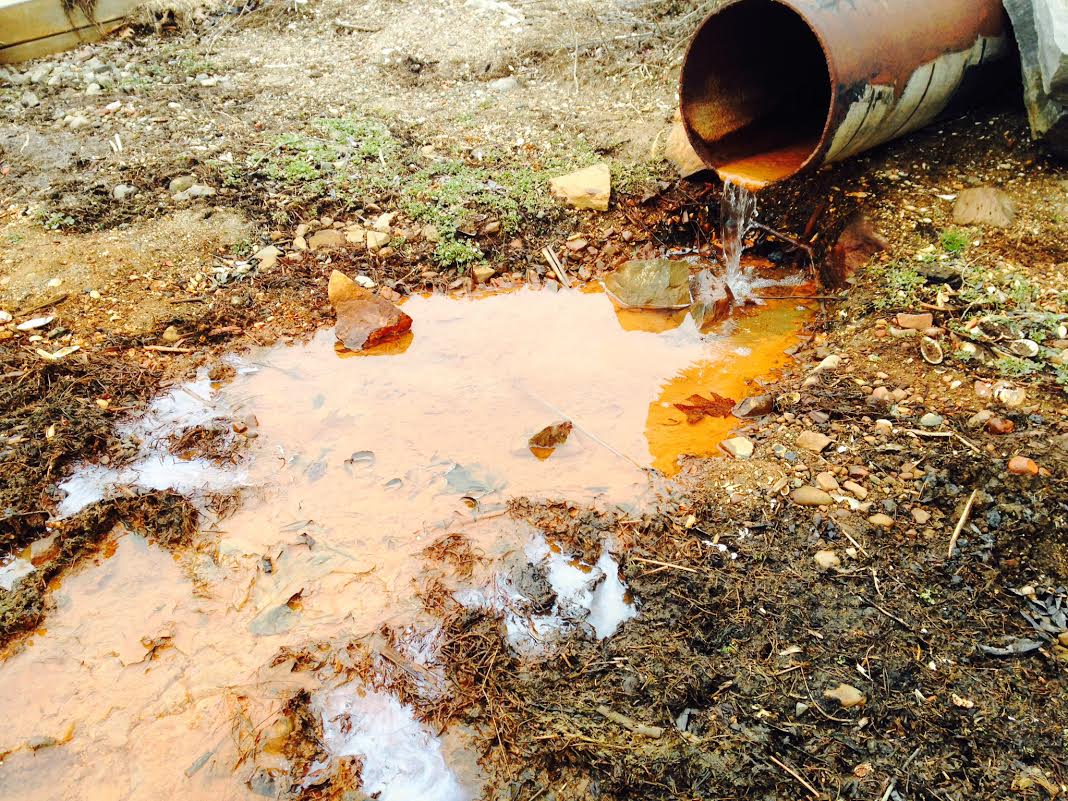
Non-Point Source pollution entering into Sodus Bay/ from 24″ drain on South Ontario Street, Sodus Point, NY
Nonpoint source pollution generally results from land runoff, precipitation, atmospheric deposition, drainage, seepage or hydrologic modification. The term “nonpoint source” is defined to mean any source of water pollution that does not meet the legal definition of “point source” in section 502(14) of the Clean Water Act. That definition states:
The term “point source” means any discernible, confined and discrete conveyance, including but not limited to any pipe, ditch, channel, tunnel, conduit, well, discrete fissure, container, rolling stock, concentrated animal feeding operation, or vessel or other floating craft, from which pollutants are or may be discharged. This term does not include agricultural storm water discharges and return flows from irrigated agriculture.
Unlike pollution from industrial and sewage treatment plants, nonpoint source (NPS) pollution comes from many diffuse sources. NPS pollution is caused by rainfall or snowmelt moving over and through the ground. As the runoff moves, it picks up and carries away natural and human-made pollutants, finally depositing them into lakes, rivers, wetlands, coastal waters and ground waters. [source: US EPA]
The primary cause of New York’s remaining water quality challenges can be attributed to NPS pollutants. NPS pollution is caused by rainfall or snowmelt moving over and through the ground. As the runoff moves, it picks up and carries away natural and human-made pollutants, finally depositing them into lakes, rivers, wetlands, coastal waters, and even our underground sources of drinking water.
- These pollutants include:
- Excess fertilizers, herbicides, and insecticides from agricultural lands and residential areas;
- Oil, grease, and toxic chemicals from urban runoff and energy production;
- Sediment from improperly managed construction sites, crop and forest lands, and eroding stream banks;
- Salt from irrigation practices and acid drainage from abandoned mines;
- Bacteria and nutrients from livestock, pet wastes, and faulty septic systems;
(taken from EPA’s Polluted brochure EPA-841-F-94-005, 1994)
States report that nonpoint source pollution is the leading remaining cause of water quality problems. The effects of nonpoint source pollutants on specific waters vary and may not always be fully assessed. However, we know that these pollutants have harmful effects on drinking water supplies, recreation, fisheries and wildlife.
Clean Water Act
NY DEC Non Point Source Program
Ag NPS Program
